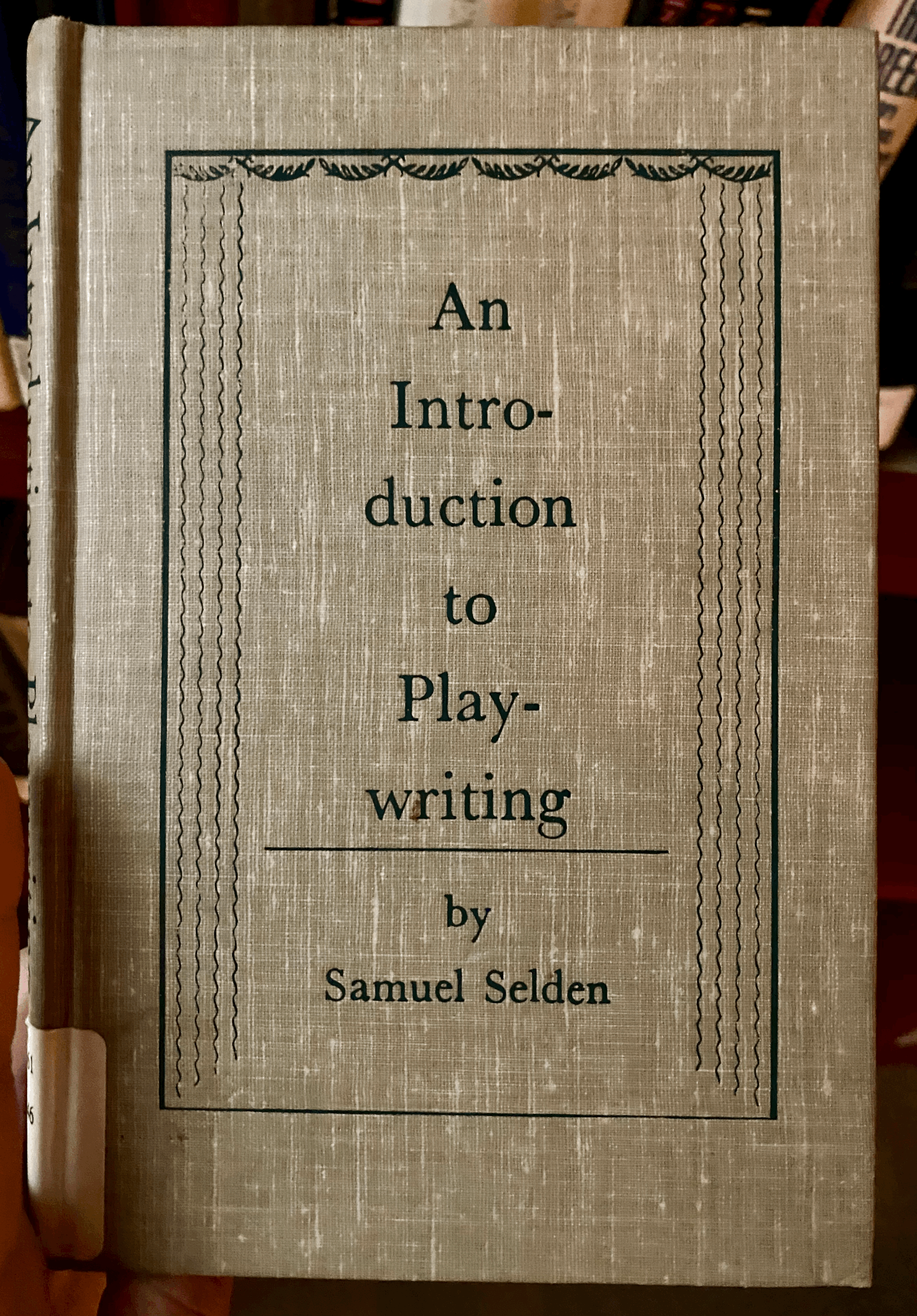There’s a trap I fall into all the time, and I’m positive I’m not alone. It’s the idea that, before I can start doing, I have to learn more. When it comes to writing, this translates to the feeling that I can’t put pen to paper until I’ve read every word of every craft book on my shelf.
But guess what? I suspect that’s just a convenient excuse my mind has created in order to protect me from the scary task of actually writing. It’s easy to tell my clients that when I can start to feel their favorite tools becoming their biggest obstacles. But telling myself? Not so much. So I was grateful earlier this month when a sixty-five-year-old playwriting book validated my suspicions.
My husband and I took a weekend trip to San Antonio for our first post-COVID getaway, and one of our destinations was the McNay, Texas’s first modern art museum. The museum is housed in a 1920s Spanish Colonial-Revival house that has since been expanded but maintains much of the old, charming look and feel — especially in its library. Perusing the shelves, I came across An Introduction to Playwriting by Samuel Selden. I’m not 100% sure whether I was supposed to, but I opened it up to read the introduction. Here are some of the highlights (emphasis my own):
“It seems to me that a writer’s guide can fulfill a very real and proper function by helping the author see more clearly, by helping him to analyze and evaluate in terms of common thought and practice. But it can hardly do this until there is already something put on paper, something to compare.”
“Let the person therefore who, never having made a play before, decides to read this book through before setting pencil to paper take warning that he is rendering himself no service in the cause of writing. The chances are that if he tries to learn by heart a list of principles already codified he will inhibit his whole urge to create. These principles can have value, but only if he looks at them at that point in his composition when he can say truthfully to himself: ‘Ah! That is right! I have sensed that already in my fumbling attempts to draw a character and design a plot. Now I see it more clearly.’”
“If one would employ a book such as this most usefully, let him determine to begin writing immediately.”
I had never heard of Samuel Selden, but he articulated exactly what I had been thinking, which is that, if we believe we have to learn everything there is to learn about story structure or character development or pacing or anything else before we start writing, then we’re doing ourselves a serious disservice. Rather, it’s really not until we have one of Anne Lamott’s infamous “shitty first drafts” underway that we can maximize the benefit we get from these guides.
We’ve all felt the temptation to let historical or technical research become an excuse for not writing, or to become so focused on creating the perfect ritual or atmosphere that that becomes an obstacle to what really matters: putting words on paper. Reading craft books can work the same way. If you fall into the trap of trying to learn it all before you try it yourself, all they really are is a barrier. So by all means, read Save the Cat! Writes a Novel, but do it with your own outline in front of you. Read Story Genius, but do it with your character development work close by, and draft those character backstory scenes she prescribes as you go.
How do you keep yourself from using the study of writing as an excuse to postpone the practice? Drop me a note or share in the comments below!

